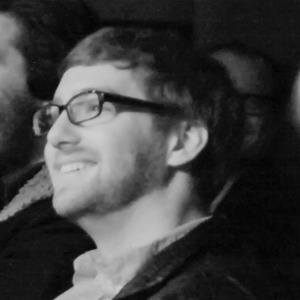Speakers
Our speaker list is almost complete! In addition to all these below, we’ve got talks about Salt Stack, what’s new in Python and Ruby, and Blinker.
Brain-Controlled Robots with Python

How is Python (particularly Python 3) used to control the DARwIn-OP robot using brain signals? This talk will focus on two main features that allow this project to work. Multiprocessing keeps the four components of the program running in real time without worrying about the GIL, and Cython wraps the robot’s C++ code in a convenient Python package.
Alyssa Batula is an electrical engineering Ph.D. candidate at Drexel University, working on a project to control a robot using recorded brain signals. She has taught Python through PhillyPUG and Girl Develop It Philadelphia.
What’s New In Python and Ruby

Peter will cover developments in both languages from the year since the last RedSnake, with a focus on new language features.
Peter Gebhard is a senior programmer at the PRECISE Center, an embedded systems research group at the University of Pennsylvania. Before coming to Penn, he was a software engineer at Lockheed Martin where he developed large Java web applications. He is much happier in Python-land (and Philly!).
The Game of Hangman, Decision Theory and Delivering Software

Information entropy and utility functions. Bitmaps, makefiles and python generators. Who knew the seemingly simple game of hangman could be so much fun? And what does it all have to do with delivering software?
During the talk, we’ll solve the game starting with our naive childhood strategy then improve the strategy with some simple decision theory tricks. Along the way, we’ll build a model for feedback, information gain and failure that we can apply directly to the way we deliver software.
During the talk, we’ll solve the game starting with our naive childhood strategy then improve the strategy with some simple decision theory tricks. Along the way, we’ll build a model for feedback, information gain and failure that we can apply directly to the way we deliver software.
Chris Conley is a software engineer lead at Monetate. Prior to Monetate he co-founded an accelerator-backed startup, Houdini and a mobile train app, iSepta.org.
GPU Programming

This talk will focus on how to use NVidia’s cuRAND and cuBLAS to accelerate Monte Carlo simulations with a GPU in C#.
Ryan Deering is head of Quantitative Development at Chatham Financial in Kennett Square, PA. He focuses on building interest rate and foreign exchange models for risk analytics and derivatives pricing. Before joining Chatham in 2006, Ryan received a PhD in Mathematics from Duke University where he studied signal processing and speech recognition.
Blinker

The talk will cover the basics of Blinker, along with a few use-cases where blinker was used, and a live demonstration of how simple, yet powerful, Blinker can be.
Steve Dorazio graduated from Drexel University with a degree in Software Engineering. He is currently a Software Developer at 50onRed, where his team specializes in web development in Python using Flask, SQLAlchemy, & numerous other frameworks. Steve is also a mobile app developer specializing in Android development.
Lapis - the Web Framework that Runs Inside Nginx
Lapis is a small, yet feature-rich framework for Lua (and Moonscript!). Although obviously inspired by Rails, it stays true to Lua’s philosophy of being small, simple to understand and composable. Because it relies on Nginx event loop, all actions including HTTP requests and database queries are asynchronous. With the power of Lua coroutines code is written synchronously but runs asynchronously, without all that callback spaghetti seen in other asynchronous platforms. It’s fast, easy to read, and easy to write.
Docker for Testing, Shipping, and Deploying

Docker is gaining popularity in testing, shipping, and deploying applications. What is it? How does it compare to Ruby’s bundler/RVM or Python’s virtualenv? Eric will introduce you to Docker and will provide answers to these questions.
Eric Windisch has been building hosting and compute services automation since 2001, is a long-time contributor to OpenStack, and is currently building a new generation of cloud and container technologies at Docker, Inc.
Put a REPL on it!
Read-Eval-Print Loops are invaluable tools, useful for learning, prototyping and debugging. This talk celebrates the simplicity of the REPL by showing how, with a trivial amount of code you can write a REPL to interact with Redis, Python, or just about anything.
Dan McClory is a web developer at PromptWorks, working primarily with Ruby and JavaScript. He’s also a programming languages and paradigms enthusiast. And he really likes REPLs.
Manhandling your infrastructure with SaltStack

SaltStack is a powerful python-based configuration management and remote execution tool that allows you to easily control any environment - from two servers to thousands. Salt is scaleable, easy to use, and completely open source. I will walk through the main features of salt, how it compares to other tools, and why you will want to immediately start adding a little bit of salt to everything.
Ben is a systems engineer at Susquehanna International Group - a global quantitative trading firm located in Bala Cynwyd, PA - working primarily on high performance computing and trading platform optimization. Prior to that he graduated from the University of Pennsylvania with BSE and MSE in Electrical Engineering.
Torquebox - Like a JBoss
Torquebox is an application server that can run your Rails, Sinatra, or Rack-based app inside of JBoss. Torquebox gives you all of the caching, clustering, messaging, and background job management tools available from JBoss without having to leave the comfort of Ruby. This talk aims to give a basic overview of Torquebox’s architecture, how to get it up and running, and some pros and cons on whether it might fit your application.
 @RedSnakePhilly
@RedSnakePhilly